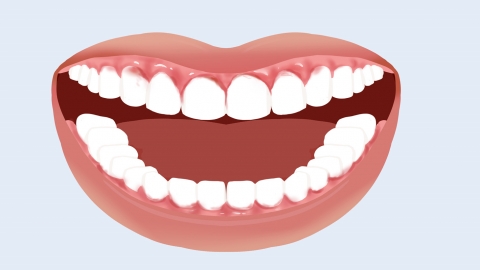Is it good to correct teeth alignment? Are there any disadvantages?
Generally, orthodontic treatment involves installing an appliance on the teeth to apply gentle, continuous force to guide the teeth gradually into their ideal positions. The general reference price for orthodontic treatment ranges from 8,000 to 15,000 yuan per session. Noticeable improvement usually occurs within 1.5 to 3 years, although treatment may be accompanied by symptoms such as tooth pain and discomfort. Orthodontic treatment offers benefits as well as potential drawbacks. Benefits include improved dental aesthetics, better oral health, enhanced chewing function, improved occlusion, and improved breathing function. Drawbacks may include initial discomfort, speech difficulties, periodontal disease, overcorrection or tooth loosening, and the risk of relapse. A detailed analysis is as follows:

Benefits of Orthodontic Treatment
1. Improve Dental Appearance
Misaligned teeth can cause facial disproportion and imbalance. Orthodontic treatment aligns the teeth neatly, resulting in smoother and more natural facial contours. It helps correct issues such as protruding lips or a receding chin caused by dental problems, thereby boosting self-confidence and improving interpersonal relationships.
2. Maintain Oral Health
Properly aligned teeth are easier to clean, which helps maintain good oral hygiene by reducing the accumulation of food debris and dental plaque, thus lowering the risk of dental caries and periodontal disease.
3. Enhance Chewing Function
Teeth that have been orthodontically aligned can chew food more effectively, aiding digestion and nutrient absorption, which benefits overall health.
4. Improve Occlusal Relationship
Orthodontic treatment restores normal occlusion, contributing to dental stability and long-term function, reducing tooth wear, and promoting dental health.
5. Improve Respiratory Function
In some cases where dental alignment issues affect breathing, orthodontic treatment may help improve respiratory function.
Drawbacks of Orthodontic Treatment
1. Initial Discomfort
In the early stages of orthodontic treatment, patients may experience tooth pain or soreness, especially when the appliance is first placed or after adjustments to the orthodontic force. This is a normal phenomenon and typically subsides as the patient becomes accustomed to the appliance.
2. Speech Difficulties
After wearing an orthodontic appliance, a foreign body sensation in the mouth may occur, which can irritate surrounding tissues and affect speech, causing temporary speech impairment.
3. Development of Periodontal Diseases
If oral hygiene is not properly maintained during long-term orthodontic treatment, conditions such as periodontitis and gingival recession may develop. Therefore, patients must maintain excellent oral hygiene.
4. Overcorrection or Tooth Loosening
Excessive orthodontic force or improper treatment timing may lead to overcorrection or tooth loosening. Patients must strictly follow the dentist's recommendations and instructions throughout the treatment process to ensure optimal results and maintain dental health.
5. Risk of Relapse
After orthodontic treatment, if patients do not wear retainers as instructed or have不良 oral habits, the teeth may gradually return to their original positions.
We recommend visiting a reputable hospital and undergoing orthodontic treatment under the guidance of a qualified dentist to ensure its effectiveness and safety. Although orthodontic treatment may have some drawbacks, under the supervision of a professional dentist, the benefits generally outweigh the potential risks.




